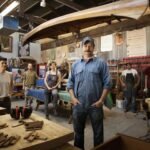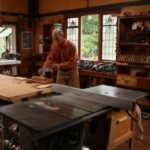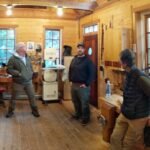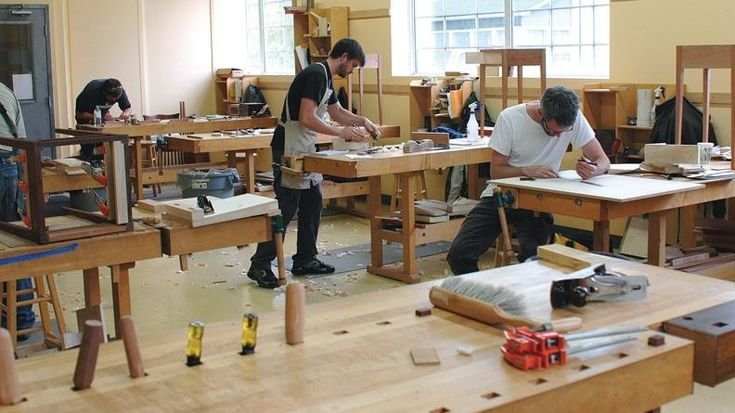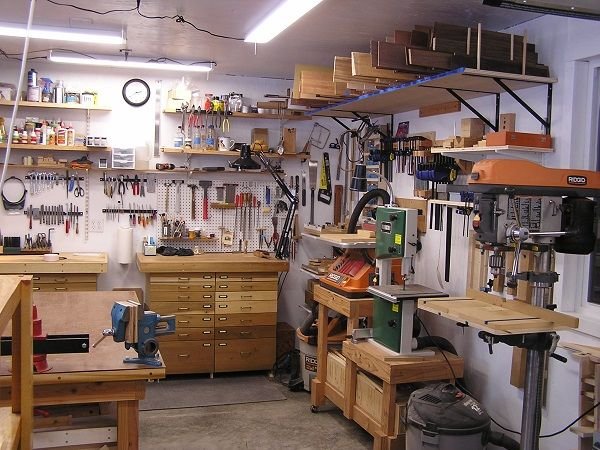One Board Woodworking: A Tale of Mistakes and Triumphs
So, grab your coffee and make yourself comfortable because I have a story for you. You know how sometimes you get fired up about something, and you think, "Heck, I can totally do that!"? Well, that was me last summer when I decided to try my hand at one-board woodworking. I was scrolling through Instagram—I know, I know; it’s a rabbit hole—but I kept seeing these amazing pieces made from a single slab of wood. I thought, “How hard can it be?”
The project I picked was a simple coffee table, nothing too major, really, but I was ambitious. I went to the local lumber yard and asked for a nice slab of walnut, thinking it would add a touch of elegance to my living room. The smell of the wood! It was intoxicating, like the forest after a rain. The guy behind the counter mentioned some boards that were air-dried and had some really beautiful character. My heart started racing. I picked a perfect-looking slab—about 60 inches long, 24 wide—and it cost me a pretty penny, but I didn’t care. I was going to make something beautiful.
The Reality Sets In
Fast-forward to my garage, where I’d set up my little workshop. It’s a cramped space, really, with half-finished bikes and power tools cluttering every surface. I had my trusty miter saw and a bench sander, but to be honest, I was way over my head. When I lifted that walnut slab out of my truck, I felt a pang of anxiety. It was heavier than I expected, and my ‘vision’ started to crack a bit.
I decided to start by flattening the surface, which, turns out, wasn’t as straightforward as I’d envisioned. The moment my sander touched the wood, it made a sound that made me cringe—a real screeching sound as it grabbed onto the grain. It jolted my hands, and I thought, “What have I gotten myself into?” But I pressed on. I figured it was just part of the process. It wasn’t until I noticed I was creating divots in the wood that I realized I should’ve been using a hand plane instead. Note to self for next time, huh?
The Great Flattening Disaster
Things took a bit of a turn when I tried to level the wooden surface. I’d watched a few videos and thought I understood what I was doing, but, boy, was I sorely mistaken. I had my iPhone recording my progress, thinking this might be my big moment. I was excited, yet I felt this knot of anxiety in my stomach. When I turned the camera to angle it just right to capture the texture of the wood… snap! Right in the middle of it all, the sander snagged my slab, and I felt like I was losing a battle in slow motion. Wood flew everywhere like confetti, and I just stood there, mouth agape, almost ready to cry.
“I almost gave up right then and there,” you know? I mean, it felt like all my dreams of creating this gorgeous coffee table were flying away along with those wood shavings. But I had a moment. I could either quit and drown my sorrows in a beer or lean into it.
So, I took a step back, breathed in deeply—the smell of fresh sawdust mixed with walnut was sharp and pungent—and refocused. I realized I needed to embrace this hefty slab and just work with it, not against it. So, I sped up my plans and grabbed my hand plane. It’s this beautiful old thing that my uncle gifted to me before he passed. One of those that has a charm you can’t quite describe.
Finding My Groove
Amazingly, once I got going with the hand plane, it felt like I was finally connecting with the wood. The gentle rhythm of pushing and pulling was almost meditative. Every shavings curling in golden spirals off the edge felt like progress. I laughed—actual laughter—when I saw those beautiful little curls piling up on the floor. “This is what I was after,” I thought. It suddenly felt like a conversation between me and the wood, instead of a battle.
After several hours, I finally had a flat surface that didn’t look like something a raccoon had taken a liking to. I could see the grain, those beautiful, rich patterns just waiting to be emphasized with some finish. I still had a long way to go, but I was back in the game.
The Finish Line (Almost)
Fast forward again, after what felt like a marathon of sanding and finishing, I stood there staring at my new creation. I used a simple Danish oil that brought out those hues in the walnut that made it feel… alive, you know? The transformation was unreal. From this rough, error-ridden chunk of wood to a table that scared me when I first brought it home; I couldn’t believe it was the same piece.
The final touch was the legs, which I opted to buy from a local hardware store more for practicality than aesthetic. I mean, after all that, I wasn’t about to risk ruining a perfectly good table. When I attached the legs, my heart was pounding. I held it up tentatively, waiting for it to wobble, but no, it stood firm. I chuckled sincerely: “You did good,” I said to myself.
A Warm Takeaway
So there you have it—a small town guy trying to make something out of a single board, full of mistakes and little victories. If you’re thinking about diving into your own woodworking adventure, I say just go for it. Don’t let the fear of messing up hold you back. You learn a whole lot more from those goofy mistakes than from the moments that go perfectly.
Honestly, it’s the wood that teaches you, and sometimes you just have to listen. You might find something deeper about yourself in the process. And hey, if it doesn’t work out, there’s always the option to get that beer.


